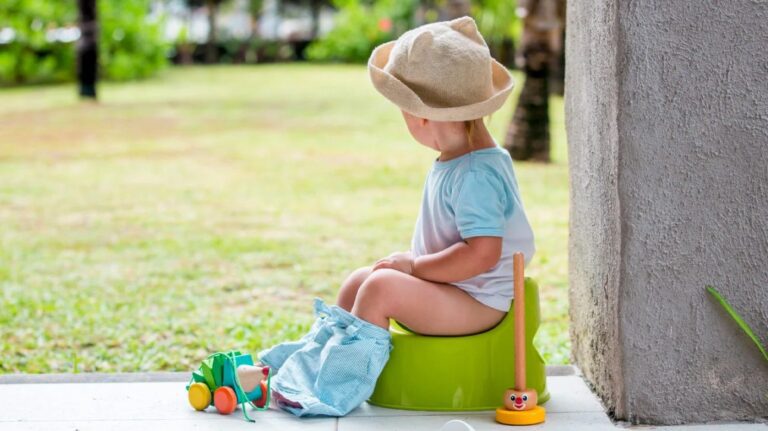How to Show My Child How Lucky They are: Teach Gratitude with These Tips
To show your child how lucky they are, say please and thank you, help someone less fortunate, volunteer, send out thank you cards, look for awe-inspiring moments, share gratitude at bedtime and at the dinner table, and compliment others. Encouraging your child to try new things and allowing them to explore their interests can also make them feel fortunate.
Additionally, you can tell your child they are amazing by highlighting their positive qualities and achievements. Teaching children to make their own luck involves modeling behaviors such as taking risks, maintaining a positive outlook, being open-minded, asking for help, being brave enough to fail, knowing when to quit, and demonstrating resilience.
By appreciating the small things, encouraging generosity and giving back, and taking them out of their comfort zone, you can help your child realize how lucky they are. As parents, we all want our children to grow up with a sense of gratitude and appreciation for the blessings they have. However, in a world filled with materialism and a constant desire for more, it can sometimes be challenging to instill a sense of gratitude in our kids. By implementing a few simple strategies and leading by example, you can show your child just how lucky they are and teach them to appreciate what they have. We will explore practical ways to help your child understand and acknowledge their blessings, fostering a mindset of gratitude that will benefit them throughout their lives.
Teaching Gratitude Through Everyday Actions
Teach your child gratitude by incorporating everyday actions. Encourage them to say please and thank you, help someone less fortunate, volunteer, and send out thank you cards. Look for awe-inspiring moments in the day, share gratitude at bedtime and the dinner table, and compliment others.
Gratitude is a powerful virtue to instill in our children, as it helps them appreciate the blessings they have and cultivate a positive outlook on life. One of the most effective ways to teach gratitude is through everyday actions. By incorporating simple gestures into our daily routine, we can show our children just how lucky they are. Here are three powerful actions you can take:Say Please And Thank You
Something as simple as saying “please” and “thank you” can go a long way in teaching gratitude to our children. When we consistently use these words in our interactions, we show them the importance of being polite and appreciative. Encourage your child to use these words as well, reinforcing the idea that acknowledging others’ kindness is essential.Help Someone Less Fortunate
Another effective way to teach gratitude is by helping someone less fortunate. This could involve volunteering at a local shelter, donating clothes or toys to those in need, or simply lending a helping hand to someone who needs it. By engaging in acts of kindness, we teach our children the value of empathy and the impact they can make in the lives of others.Volunteer In The Community
Volunteering in the community not only benefits those in need but also teaches our children important life lessons. Find opportunities for your family to get involved in local projects, such as community clean-ups, charity events, or food drives. Engaging in hands-on volunteer work allows your child to witness the impact of their actions firsthand and fosters a sense of gratitude for the privileges they enjoy. Incorporating these actions into your daily life can make a significant impact on your child’s understanding of how lucky they are. It teaches them to appreciate the small blessings, be empathetic towards others, and give back to the community. By demonstrating gratitude through everyday actions, we empower our children to lead fulfilling lives with a grateful heart.
Credit: www.bostonglobe.com
Cultivating Gratitude Habits At Home
Teaching our children how lucky they are can be done by encouraging gratitude habits at home. Simple actions like saying please and thank you, volunteering, and sharing gratitude at bedtime and the dinner table can help instill a sense of appreciation in our children.
By modeling these behaviors ourselves, we can show them the importance of being grateful for what they have.
Sending Out Thank-you Cards
One effective way to cultivate gratitude habits at home is by encouraging your child to send out thank-you cards. This simple act teaches them the importance of expressing appreciation and gratitude towards others. It also helps them realize how fortunate they are to have people in their lives who are kind and supportive.Recognizing Awe-inspiring Moments
Another way to show your child how lucky they are is by helping them recognize awe-inspiring moments in their day-to-day lives. Encourage them to pay attention to the beauty and wonder that surrounds them, whether it’s a beautiful sunset, a blooming flower, or a kind gesture from a friend. By appreciating these small moments of awe, they will develop a greater sense of gratitude for the world around them.Sharing Gratitude At Bedtime And Dinner
Bedtime and dinner are ideal moments to instill gratitude habits in your child. Take the time to ask them what they are grateful for that day or what positive experiences they had. Encourage them to share their gratitude with the family, allowing everyone to reflect on the things they are thankful for. This practice not only cultivates gratitude in your child but also creates a positive and connected atmosphere in the home. In conclusion, cultivating gratitude habits at home is crucial in helping your child recognize how lucky they are. By sending out thank-you cards, recognizing awe-inspiring moments, and sharing gratitude at bedtime and dinner, you are teaching your child to appreciate and be grateful for the people and experiences in their lives. These habits will shape their mindset and help them lead a more fulfilling and appreciative life.Fostering Appreciation For Others
Help your child realize how fortunate they are by encouraging them to appreciate the small things, teaching them to be generous, and showing them the value of giving back. Additionally, taking them out of their comfort zone can help them gain perspective and foster appreciation for others.
Complimenting Others
Complimenting others is a powerful way to teach your child about the importance of appreciation. By acknowledging and expressing admiration for others, you not only uplift their spirits but also show your child the value of recognizing and celebrating the positive qualities in people around them. Encourage your child to notice the good in others and to express their appreciation sincerely and genuinely. This can be as simple as saying “You did a great job!” or “I love your artwork!” when they see someone’s achievements or creative endeavors. By making compliments a regular part of their interactions, you teach your child to be kind, observant, and appreciative of others’ efforts and accomplishments.
Teaching Empathy And Kindness
Empathy and kindness are fundamental qualities that can help your child develop a deeper understanding of others’ experiences and perspectives. By putting themselves in someone else’s shoes, they can gain insight into the challenges and joys that others may face. Encourage your child to engage in conversations about empathy and kindness by asking questions like “How do you think that person feels?” or “What can we do to make someone’s day better?” Teach them that empathy involves active listening, understanding, and offering support to those in need. By fostering empathy, you help your child appreciate the struggles and triumphs of others, which in turn can make them more grateful for their own circumstances.
Encouraging Random Acts Of Kindness
One powerful way to foster appreciation for others is by encouraging your child to perform random acts of kindness. This could include actions like holding the door for someone, helping a classmate with their homework, or donating toys to a local charity. By engaging in these acts, your child learns the importance of making a positive impact on the lives of others. Encourage them to think about the positive ripple effects their actions can create, and how even small gestures can bring joy to someone else’s day. By nurturing a habit of kindness, you instill in your child a deeper appreciation for the interconnectedness of our lives and the power we have to make a difference.
Instilling A Sense Of Independence And Exploration
Help your child understand how lucky they are by instilling a sense of independence and exploration. Encourage them to try new things, discover their interests, and appreciate the small things in life. Show them the value of gratitude and generosity, and teach them the importance of giving back to others.
Giving Children Independence
One of the most effective ways to show your child how lucky they are is by giving them independence. Allowing them to make their own choices and decisions helps them understand the value of freedom and autonomy. It teaches them to appreciate the opportunities they have to explore and experience new things.
Encouraging New Experiences And Hobbies
Encouraging your child to engage in new experiences and hobbies is an essential part of instilling a sense of independence and exploration. By exposing them to a variety of activities, you broaden their horizons and help them discover their passions. Whether it’s trying out a new sport, learning a musical instrument, or engaging in a creative art form, each new experience opens doors to personal growth and a deeper appreciation for the opportunities they have.
Embracing Different Cultures And Perspectives
Embracing different cultures and perspectives is another crucial aspect of showing your child how lucky they are. By exposing them to diverse cultures, traditions, and people, you broaden their understanding of the world and encourage empathy and acceptance. Expose them to different cuisines, read books from different cultures, visit museums and art exhibits that showcase diverse perspectives. This helps them realize the richness of human diversity and the privileges they have to explore and learn from various cultures.
Teaching Resilience And The Value Of Perseverance
When it comes to showing your child how lucky they are, teaching resilience and the value of perseverance is essential. These qualities will help your child navigate through life’s challenges and appreciate the opportunities they have. By demonstrating the importance of taking risks, maintaining a positive outlook, and being open-minded and asking for help, you can instill valuable life skills in your child that will benefit them for years to come.
Demonstrating The Importance Of Taking Risks
One of the most important aspects of teaching resilience is showing your child the importance of taking risks. Taking risks encourages personal growth and opens up doors to new opportunities. By encouraging your child to step out of their comfort zone, you can help them develop valuable problem-solving skills and learn to overcome obstacles. Emphasize the importance of trying new things and reassure them that failure is a natural part of the learning process. Encourage them to pursue their passions and support them every step of the way.
Maintaining A Positive Outlook
A positive outlook is crucial when it comes to teaching resilience and gratitude. Encourage your child to focus on the positives even during challenging times. Teach them to reframe negative situations and find the silver lining. By fostering a positive mindset, you can help your child develop resilience and appreciate the good things in their life. Model positivity yourself and share stories of overcoming adversity to inspire and motivate them.
Being Open-minded And Asking For Help
Another valuable lesson in teaching resilience is the importance of being open-minded and asking for help when needed. Encourage your child to approach new situations with an open mind and be willing to learn from others. Teach them that seeking help is a sign of strength, not weakness. Lead by example and show them that it’s okay to ask for assistance when facing challenges. This will not only build their resilience but also foster a sense of community and collaboration.
In conclusion, teaching your child resilience and the value of perseverance is crucial in showing them how lucky they are. By demonstrating the importance of taking risks, maintaining a positive outlook, and being open-minded and asking for help, you can equip your child with the skills necessary to face life’s challenges with gratitude and resilience.
Frequently Asked Questions For How To Show My Child How Lucky They Are
How Do You Teach Kids How Fortunate They Are?
Teaching kids how fortunate they are can be done through simple actions: saying please and thank you, helping those less fortunate, volunteering, sending thank you cards, seeking awe-inspiring moments, expressing gratitude at bedtime and the dinner table, and giving compliments to others.
Encourage independence and exploration, highlight their amazing qualities, and teach them to make their own luck by taking risks, maintaining a positive outlook, being open-minded, asking for help, embracing failure, and demonstrating resilience. Encourage appreciation for small things, generosity, and giving back, and expose them to new experiences outside their comfort zone.
What Makes A Kid Feel Lucky?
Encourage your child to explore new things and be independent. Let them try new hobbies, foods, or activities. Show gratitude and teach them to say please and thank you. Volunteer and help those less fortunate. Compliment them and highlight their amazing qualities to make them feel special.
Model empathy and generosity to teach appreciation.
How Do You Tell Your Child They Are Amazing?
Tell your child they are amazing by using these positive words: 1. You light up the room. 2. You have the best laugh. 3. You inspire me. 4. I love how passionate and excited you are. 5. You make the world a better place by being in it.
6. You are so brave. 7. That took a lot of courage, I’m so proud of you!
How Do You Teach Kids Luck?
Teaching kids luck involves modeling behaviors that cultivate gratitude and resilience. Encourage them to say please and thank you, help those less fortunate, volunteer, and show gratitude at bedtime and the dinner table. Additionally, teach them the value of compliments and finding awe-inspiring moments in their day.
Conclusion
In a world filled with opportunities and privileges, it’s important to show our children just how lucky they are. By teaching them gratitude, empathy, and compassion, we can help them understand the value of their blessings. Encouraging them to appreciate the small things, instilling a sense of generosity, and teaching them the importance of giving back are all ways we can nurture their gratitude.
So let’s take the time to foster a grateful mindset in our children, helping them realize just how fortunate they truly are.








